Between the extraordinary turns of its long and intricate history and its vibrant cultural richness, Italy has always been a land that hosts iconic places embraced in a fascinating aura of mystery. Would you like to find out together?
From North to South, today we want to accompany you on a different journey than usual, made up of authentic adventures to discover some of the most interesting mystical and mysterious places in Italy between magic, superstition and spirituality. Let's start, a country awaits us hiding in its bowels the charm of mysteries yet to be revealed!

Mysterious places in Italy: mystic trips from North to South across the Boot
When it comes to magic, superstition and spirituality, in Italy there are some truly unique and evocative places that, believe us, are really rare to find elsewhere.
Some of these have a direct link with the sacredness of religious faith, encountering the charm of art and folklore on their path; others fuel the imagination of visitors, hiding behind a veil of mystery with a literary flavour; some others, instead, are known to tourists for their alleged good luck properties.
In this fascinating itinerary through mystical and mysterious places in Italy we will visit together, full of curiosity and will to be amazedm, 10 stages one more interesting than the latter. Let's get started right away!
10. Mysterious places in Italy: the statue of Juliet in Verona
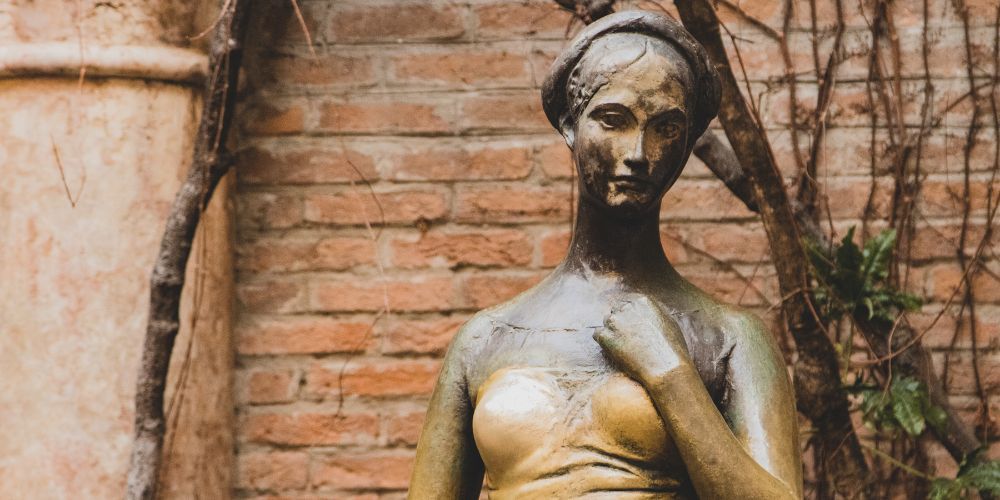
We begin our tour to discover the most curious mystical and mysterious places in Italy starting from something that has to do with love, the purest human emotion, but also with...superstition.
We are in Verona to visit the statue of Juliet, the female protagonist of Shakespeare's famous work, which has become a true icon of romanticism. The statue pictures the young woman waiting for Romeo's sweet caress and is located in the courtyard of Juliet's house-museum; however, the one visible today is only a copy made in 2014, while the original bronze work by the master Nereo Costantini (1969) is kept inside the building.
What is its magic? Well, superstition or not, for lovers who travel to this beautiful city it is a real ritual to touch the statue of Juliet, in particular her breasts, to nourish the couple's love with luck and abundance.
Discover Verona, the City of LoveListen to the podcast version of the article with Monna Lisa's voice
9. Torba Abbey in Varese
Our next stage is the Torba Abbey, located in the quiet countryside of Lombardy near Varese, a building surrounded by greenery that enchants visitors with its ancient and mysterious history, blending suggestion with the elegance of art.
Originally built by the Romans as a military outpost during the final age of the Empire, it was later converted into a religious place surrounded by a truly mystical atmosphere. In this surreal location each brick still tells the stories of those who lived within these walls, experiencing the deepest spirituality; and in particular, it is the beautiful frescoes that decorate the internal rooms giving the monastery a timeless charm.
The most mysterious fresco is on a wall on the second floor of the tower and depicts eight nuns: but be careful, three of them are faceless. A legend tells that these women escaped from Torba, returning to these places only after death as spirits in the attempt to find eternal peace and recover their identity into the fresco.
Visit Torba Abbey8. The Finger of Columbus in Turin
Let's now move to Turin, in Piazza Castello, to discover something truly curious and intriguing: the "Finger of Columbus", a medallion carved on a wall created by Mario Ceroli in 1961 which depicts the very famous explorer pondering on a globe with a very serious and busy attitude, representing the will and determination to study and discover new worlds.
But there is a peculiarity: the sculpture has a hand in relief with the little finger extending outwards. Today the "Finger of Columbus" is an iconic landmark and attracts the curiosity of tourists from all over the world: in fact, the story tells that intertwining your little finger with that of the great navigator can bring good luck!
Discover Turin with our Card7. North Sardinia, Putifigari: the Domus de Janas of S'Incantu
Well, the time has come to move from the continent to an island, which by its nature is full of magic, superstition and spirituality: we are in North Sardinia discovering the Domus de Janas of S'Incantu at Putifigari (Necropolis of Mount Siseri).
It is an extraordinary archaeological site, not far from Sassari and Alghero, absolutely among the most interesting mystical and mysterious places in Italy. This pre-Nuragic necropolis enchants with its burial chambers and thousand-year-old decorations on the rock of this land (it is estimated that the site is about 5000 years old!), the only true witness left remaining to tell ancient legends and funerary rituals.
The term "Domus de Janas" evokes the myth of fairies, particularly strong here in Sardinia, and adds a truly unique veil of magic to this location: a place made of history and mystery, of beauty and union between the terrestrial and divine dimensions, to discover by tracing back the archaeology of this wonderful region.
Do you want to learn more? Please check out our guide about magical places in Sardinia!

Hand the floor over to: Chiara Murru, Spazio-T Association Chief, Mamatita Festival Director
"Some say Sardinia is the land of fairies. Its ancient and mysterious history has always fascinated travelers from all over the world. What remains of this ancestral spiritual heritage and how it's reflected in art, culture and everyday life?"
A: "Much of this power belongs to places like the Domus de Janas. I think of S'incantu in the territory of Putifigari, whose name already contains the ancient magic that can still be breathed and senses if you visit it. An exceptional necropolis that dates back more than 5,000 years ago, which like a treasure chest holds incredible architecture and light. It is in places like these, linked to the relationship with the afterlife, in a never-ending dialogue between past and present, that we write everyday our 'memory of the future'. A bond - as Grazia Deledda writes - woven by fairies 'with gold fabrics in gold looms', which inspires our artistic and cultural production and our daily life, inevitably. In Sardinia every landscape is magic, no matter if in the hinterland or on the coast, and much of what is produced, material or immaterial, is closely linked to the heritage that we are fortunate enough to enjoy and which, also for this reason, must always be protected and respected."
6. Boboli Gardens in Florence
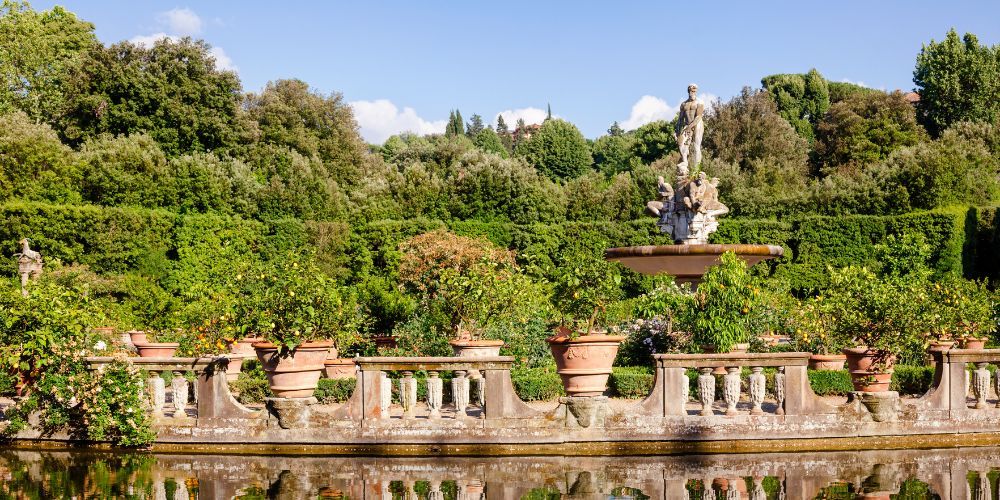
We continue our journey among the mystical and mysterious places in Italy reaching Florence, to discover a place that, although not apparently, hides an aura of great charm and mystery: it is the sumptuous Boboli Gardens, a landscape masterpiece shaped over many centuries following the evolution of the artistic taste of the time.
Located near Palazzo Pitti, this green paradise enchants with its purely Renaissance elegance and offers an extraordinary panorama of the city. What makes Boboli Gardens so evocative? Certainly its atmosphere full of royalty but above all of occult: in fact, exploring it you will cross intricate shaded avenues and green labyrinths, admiring around you the monumental obelisk, numerous classical statues, sculptures depicting ancient divinities such as Neptune and Demeter, sumptuous fountains, gates, and also caves and temples.
Here, in Boboli Gardens, art and nature are in perfect harmony: a timeless wonder in the heart of Florence where you can walk with a dreamy gaze and a mind absorbed in thought.
Explore Boboli Gardens in Florence5. Cecco Bridge in Ascoli
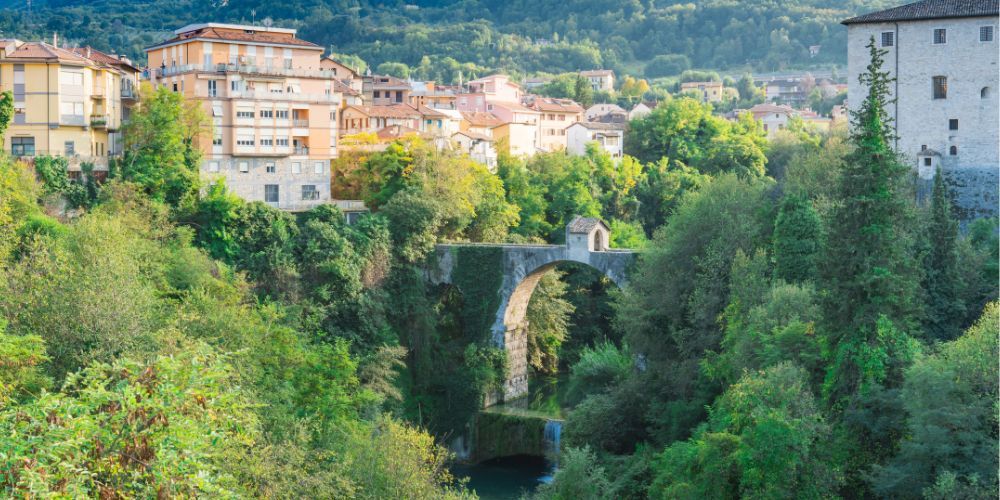
Let's now take a stage in Le Marche, a wonderful region waiting to be discovered, and more precisely let's reach out Ascoli for a particularly mysterious and fascinating story: let's talk about the Cecco Bridge, a building with almost fairy-tale features framed in the lush surrounding nature, among the green vegetation and the blue of the Castellano waters.
Legend attributes the name of the bridge to Cecco d'Ascoli, a really particular character and pioneer in the field of studies about many disciplines, from medicine to astronomy, from cosmology to anthropology. Considered as a heretic by the Church, he was sentenced to death at the stake. But why the bridge? Well, according to some it was built in only one night-time by the Devil himself under the direction of Cecco: a very valid reason to attract the curiosity of visitors, right?
Although the story may be suggestive and engaging, with that typically medieval charm, in reality it seems that the famous bridge was much older and dates back to Roman age.
Find out Le Marche with Visit Italy4. The Non-Catholic Cemetery in Rome
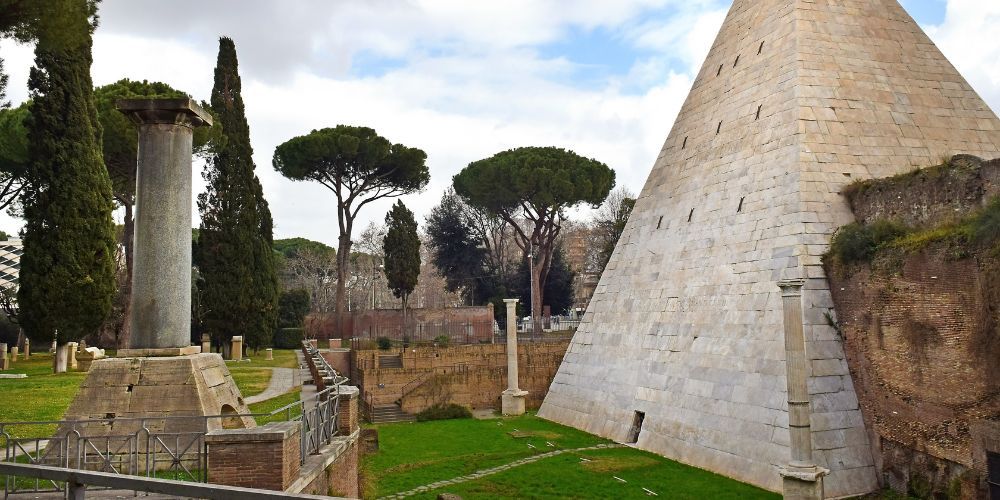
Finally we are in the Capital, a city extraordinarily rich in beauty, art and history, but amazingly in a lot of mysticism and mystery too. On our trip we chose to visit the Non-Catholic Cemetery, also known as the English or Artists Cemetery, an extraordinary place that symbolizes the cultural diversity of the Eternal City especially through the taste of literature and the sacredness of a location like this.
Officially inaugurated in 1821 but already existing in the previous century, this cemetery hosts tombs of writers, artists and historical figures of different nationalities and faiths, creating an evocative mosaic of personal stories and cultural traditions of the past, now lost. Among its most famous tombs, the names of John Keats and Percy Bysshe Shelley, iconic poets of Romanticism, certainly deserve special mention; among the most important Italian figures buried here, we remember Antonio Gramsci and Andrea Camilleri.
This place, so serene but also melancholic, is also particularly evocative for some artistic and architectural details. Specifically, great importance should be given to the Pyramid of Cestius, an ancient Roman tomb incorporated into the cemetery, and the touching sculpture of the Angel of Grief, created by William Wetmore Story (also buried here) as a funerary monument for his wife's grave.
Discover the Capital with Visit Rome Pass3. The crypt of S. Nicholas in Bari
The next stage takes us to Apulia, to the charming city of Bari, to visit together a so particular and evocative grave, that of 'Santa Claus'...we are talking about the Crypt of S. Nicholas, a jewel of mysticism, spirituality and history.
Located in the basement of the Basilica of S. Nicholas, the crypt houses the remains of the Saint and hosts everyday hundreds of curious and faithful people who wish to discover this place of worship. The crypt is a masterpiece of Romanesque architecture, where every fresco, every mosaic and every column tells of the miraculous deeds of Saint Nicholas; all this gives the crypt a magical and solemn atmosphere, a perfect setting for a place of devotion like this, as well as an artistic treasure that witnesses the richness of faith and culture in the history of the city.
The best time to visit this southern jewel? We recommend December, the perfect month to immerse yourself in the folklore of the festival dedicated to the Saint of People and the wonder of Christmas.
Visit the crypt in Basilica of S. Nicholas2. Dracula's Grave in Naples
We are approaching the end of our journey by visiting the wonders of Naples, a city that certainly needs no introduction in terms of beauty, imagination, genius and recklessness. But, of course, it is also a city full of occult places with mystical and spiritual charm: one of these is a tomb, a very particular tomb.
Did you know that the legendary Count Vlad III, known to the world as Dracula, is buried in Naples? More precisely we are in the cloister of the Church of Santa Maria La Nova, where there is a curious 1400s funerary monument dedicated to Matteo Ferrillo containing a complex symbolism typical of the languages of esotericism and alchemy. Well, studies regarding the decoding of these symbols, curiously, suggest many points in common with the most famous vampire in history.
If you're on a hunt for mystical and mysterious places in Italy and love the thrill of horror, what's better than the grave of the Prince of the Night? For further information, you can check out this article.
Discover Naples with our Pass1. Villa Palagonia in Bagheria, Palermo
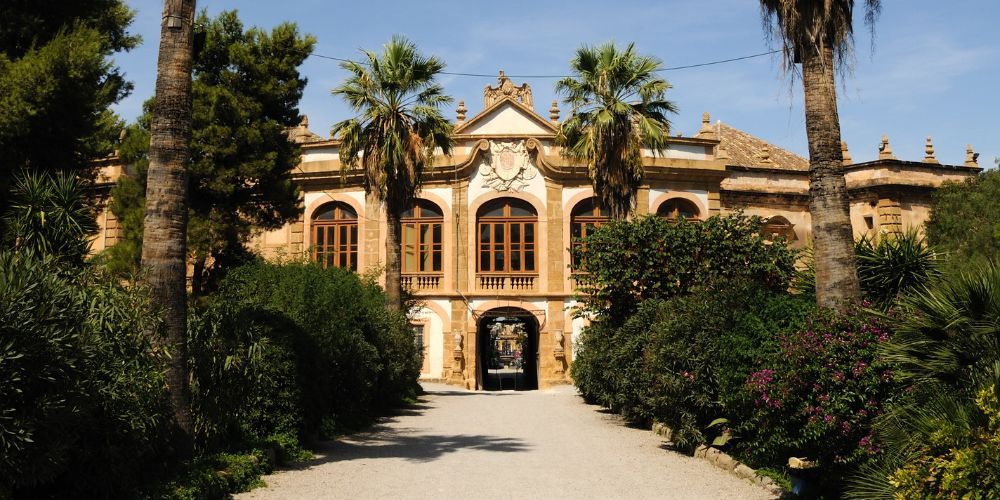
And here we are at the end of this tour of mystical and mysterious places in Italy; we're heading to Sicily, destination: Villa Palagonia in Bagheria, near Palermo.
This villa is an authentic baroque jewel of Sicily, a crazy location that enchants visitors above all with its architectural eccentricity and its oddities. Built in the 1700s for Prince Ferdinando Francesco Gravina, this residence boasts a facade adorned with weird monstrous figures carved in stone, creating an environment with a fairy-tale flavour, but also rather creepy. The "monsters" of Villa Palagonia, the result of grotesque and imaginative representations, offer a surreal experience to those who cross the gates of this sumptuous residence.
Obviously, the interior also provides great impact: the Hall of Mirrors stands out, just as the iconic welcome caption "Watch yourself through the crystal mirror and in the same singular magnificence contemplate the image expressed in mortal frailty."
Villa Palagonia is a combination of beauty and strangeness, a place of charm and art that will amaze you like few others. And if you are looking for other suggestive experiences to live in nearby Palermo, just click the button below!
Check out how to best prepare for your holiday to PalermoAbout the author
Written on 06/09/2024


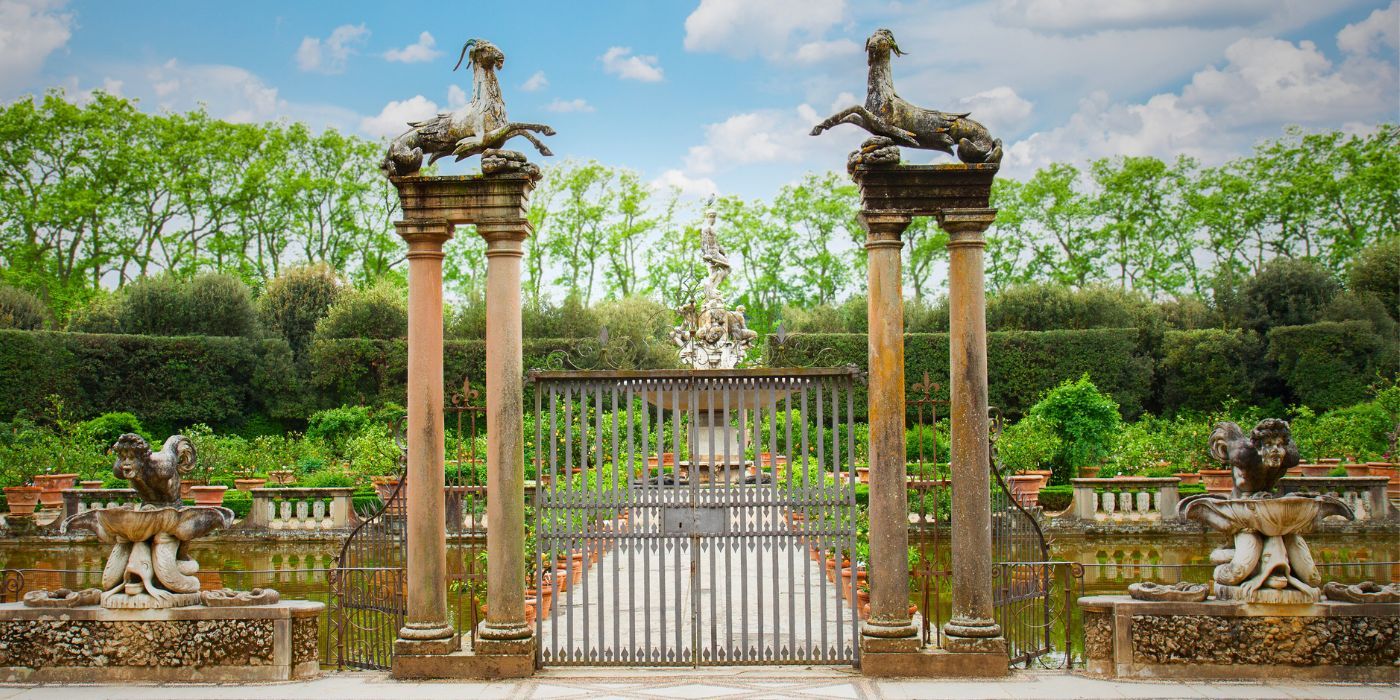
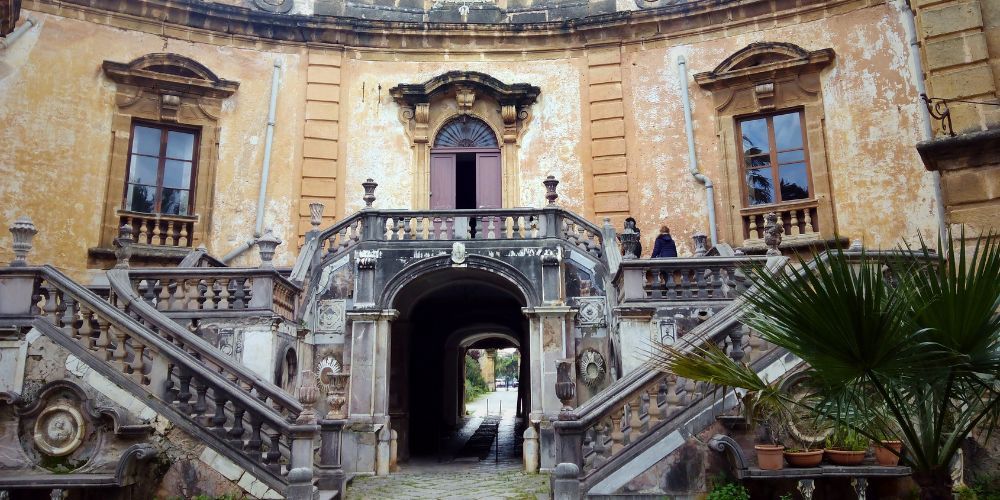
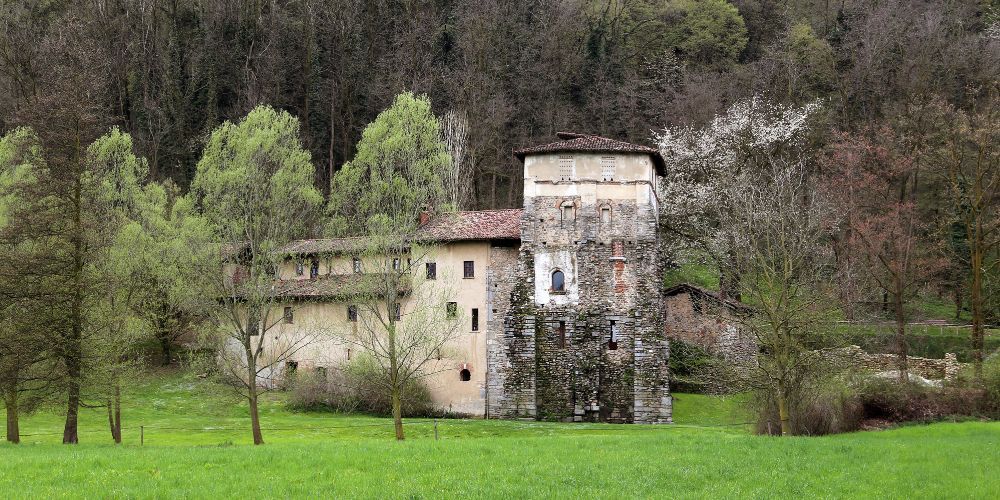

Massimiliano Antonio Primi
Let's find out 10 mysterious places in Italy for a mystical trip made of authentic adventures between magic, superstition and spirituality.